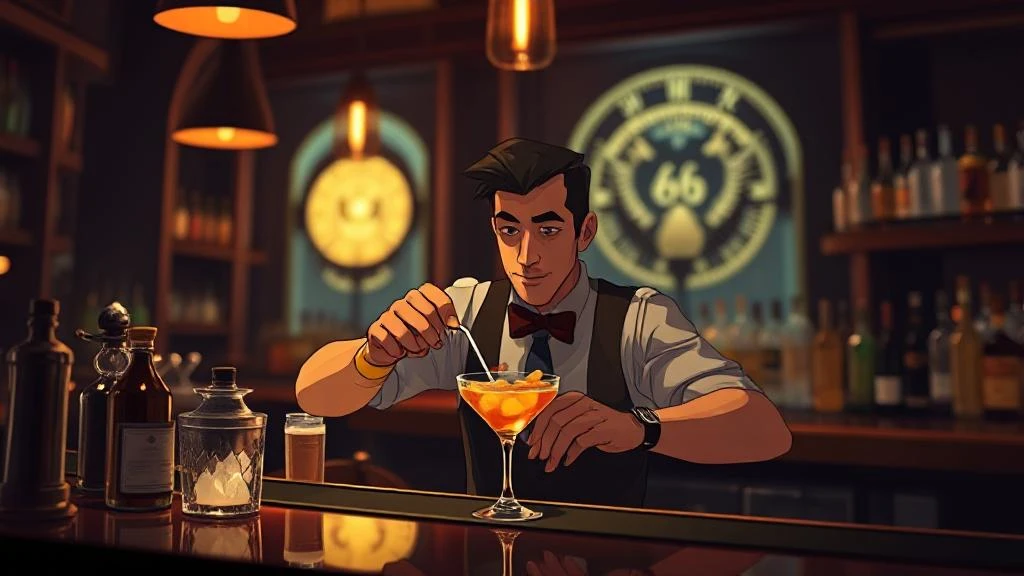In the world of mixology, few names carry as much weight as Ada “Coley” Coleman.
As one of history’s most influential female bartenders, her legacy continues to inspire cocktail enthusiasts and professionals alike.
Her pioneering spirit behind the bar at London’s prestigious Savoy Hotel not only broke gender barriers but also gave us one of the most enduring classic cocktails of all time.
The First Lady of Mixology
Ada Coleman was born in England around 1875 and would go on to become one of the most celebrated figures in cocktail history. In 1903, she achieved what was then considered nearly impossible – becoming the head bartender at the American Bar at London’s Savoy Hotel, a position she held for an impressive 23 years.
Known affectionately as “Coley” by her patrons, she quickly developed a reputation for exceptional hospitality and innovative mixology. At a time when women were rarely found behind the bar, Coleman not only excelled but became an international icon in a male-dominated industry.
From Humble Beginnings to Cocktail Royalty
Coleman’s journey into bartending began after her father’s death. Her father had worked as a steward at a golf club owned by Rupert D’Oyly Carte, part of the family that owned the Savoy Hotel. Out of respect for her father’s service, D’Oyly Carte offered Coleman a position at Claridge’s Hotel in 1899, where she began her career in hospitality.
Under the guidance of a wine butler named Fisher, Coleman mixed her first cocktail – a Manhattan. Her natural talent quickly became apparent, and by 1903, she had moved to the American Bar at the Savoy Hotel, where she was promoted to head bartender after Frank Wells retired.
During her tenure at the Savoy, Coleman served an impressive roster of notable clients, including:
- Mark Twain
- Charlie Chaplin
- Marlene Dietrich
- The Prince of Wales
- Diamond Jim Brady
- Prince Wilhelm of Sweden
The Signature Style of a Pioneer
Coleman’s approach to mixology was characterized by meticulous attention to detail and a willingness to experiment with flavors. She was known for creating drinks tailored to her guests’ preferences and moods, often spending hours perfecting new recipes.
Despite working in an era without the vast array of ingredients available to modern bartenders, Coleman managed to create drinks with remarkable complexity and balance. Her style emphasized both technical precision and creative intuition – qualities that define great bartenders to this day.
A lover of musical theater, Coleman brought a sense of showmanship to her role. Her personality behind the bar was as much a draw as her cocktails, making her an early example of the bartender as both mixologist and host.
The Hanky Panky: A Cocktail Legacy
Coleman’s most famous creation is undoubtedly the Hanky Panky cocktail, which remains a classic on bar menus worldwide. She created this sophisticated drink for Sir Charles Hawtrey, a celebrated comic actor and regular at the American Bar.
As Coleman recounted in a 1925 interview with The People newspaper: “Some years ago, when he was overworking, he used to come into the bar and say, ‘Coley, I am tired. Give me something with a bit of punch in it.’ It was for him that I spent hours experimenting until I had invented a new cocktail.”
The result was a brilliant combination of gin, sweet vermouth, and Fernet-Branca that perfectly balanced sweetness with complexity. Upon tasting it, Hawtrey reportedly exclaimed, “By Jove! That is the real hanky-panky!” – giving the cocktail its memorable name.
The cocktail remains on the menu at the Savoy’s American Bar to this day, both in its original form and in modern variations. In 2015, it was listed by Drinks International as one of the top 50 best-selling cocktails worldwide.
Industry Impact and Legacy
Coleman’s influence extends far beyond her signature cocktail. As one of the first globally recognized female bartenders, she helped pave the way for women in the hospitality industry. Her success demonstrated that skill and hospitality transcend gender, a revolutionary concept in the early 20th century.
Many cocktail historians believe that Coleman mentored Harry Craddock, who would later become her successor at the American Bar and author of the influential “The Savoy Cocktail Book” (1930), which included her Hanky Panky recipe.
The importance of Coleman’s contributions to bartending was officially recognized in 2016 when Liquor.com listed her as one of the nine most important bartenders of all time. Her influence continues to be felt in modern bartending culture:
- The Ada Coleman Project, a professional organization supporting women in bartending
- Ada’s Place, a cocktail bar and lounge in New York City named in her honor
- The continued teaching of her techniques and recipes in bartending schools worldwide
A Pioneering Spirit
What makes Coleman’s story particularly remarkable is the context of her achievements. In early 20th century England, women working as bartenders (then called “barmaids”) faced significant social and professional barriers. The prevailing attitude was that bartending was unsuitable for women, yet Coleman not only entered the profession but rose to its highest echelons.
Her contemporary at the Savoy, Ruth “Miss B” Burgess, also deserves recognition as another pioneering female bartender. Interestingly, accounts suggest the two women worked separate shifts for 20 years without speaking to one another due to professional rivalry – so intense was the competition in this groundbreaking field for women.
The End of an Era
In late 1925, the Savoy announced Coleman’s retirement as the American Bar prepared for renovations. She was replaced by Harry Craddock, who had worked at the service bar while Coleman managed the front bar.
When she retired in early 1926, five London newspapers covered the story – a testament to her celebrity status. In an interview with The London Daily Express, which called her “England’s most famous barmaid” and “The Queen of Cocktail Mixers,” Coleman estimated she had served one hundred thousand customers and poured one million drinks during her career.
After leaving the Savoy, Coleman took a part-time job managing the staff in the ladies’ cloakroom at The Berkeley hotel. She lived a long life, passing away in 1966 at the age of 91.
A Lasting Influence
Today, Ada Coleman’s legacy lives on in every female bartender who steps behind the bar, in every perfectly balanced Hanky Panky served, and in the ongoing evolution of cocktail culture. Her story reminds us that innovation in mixology often comes from unexpected sources and that true hospitality transcends conventions.
The next time you sip a classic cocktail, take a moment to remember “Coley” – the pioneering spirit who showed the world that being a great bartender has nothing to do with gender and everything to do with passion, creativity, and the desire to serve the perfect drink.
Are you ready to try your hand at making Ada Coleman’s signature Hanky Panky? Or perhaps you’d like to explore more classic cocktails with similarly fascinating histories? The world of mixology is full of stories waiting to be discovered, one glass at a time.











